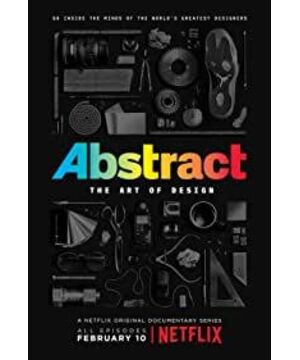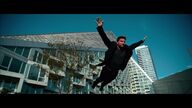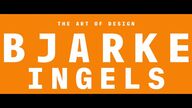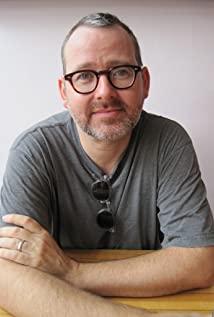I remember when I was in middle school, the Chinese teacher asked everyone to write a 2,000-word extracurricular book every week, but my extracurricular books were all comics, so how could I write so many words, so I thought of a way to give Text with illustrations (it appears to be a lot of pages). Unexpectedly...
I remember when I was in middle school, the Chinese teacher asked everyone to write a 2,000-word extracurricular book every week, but my extracurricular books were all comics, so how could I write so many words, so I thought of a way to give Text with illustrations (it appears to be a lot of pages). Unexpectedly, after writing a few articles, the Chinese teacher actually took this notebook as a template and showed it to everyone, "Look at this classmate, not only did the homework earnestly, but also provided pictures for the article. Look at your homework, all of you. What did you write?" I was so excited when I heard that, I just filled the page with illustrations, and soon the teacher called my parents on the grounds that I didn't do my homework...
Thankfully, when I first entered the workforce, not only did I not have to write those thousand words, I didn’t even have to write those few subtitles—I drew a lot of cover illustrations.
However, after watching the documentary "Abstract: The Art of Design", I wanted to write a review. Maybe it was the life experience of the designer in the film that touched me, or maybe it was because I always had to pay back what I owed. Yes (because I didn't write well when I was in school, this text took a week to complete, children don't want to learn from me)! I hope that through sharing, we can further understand the masters' thinking behind the design of solving problems, and how to design in the end? How to make a good design? Even if you are not a designer, this documentary will help you greatly improve your aesthetics and taste, and especially make you observe, experience and be moved more about the things around you.
01 Christoph Niemann: Illustration Design
The first episode introduces an illustrator who lives in New York: Christoph Niemann, an illustrator who has painted more than 20 covers for The New Yorker magazine (ordinary illustrators can have It would be nice to have a chance to paint The New Yorker once), his work is playful and dynamic, with a surreal whimsical color.
American surrealist painter Chuck Krause once said: "Inspiration is reserved for amateurs, and professionals only need to punch in and go to work".
Designing isn't about wasting hours waiting for that moment of inspiration, it's about sitting down at your workbench and starting to pick up a paintbrush and keep experimenting, making choices, and waiting for something good to happen! Of course you can also create a process, but when your job is just to follow the process, it is very dangerous even if you try hard, because it will not let you solve the real important problem, I want to try to do one thing well, but try to do Is the good thing the real thing to do?
Christoph made a good analogy with the heart. People don't like the shape of the real heart, they feel cruel, and they can't understand too abstract and simple graphics, and the design between the figurative and the abstract is the best expression. .
There are not many scenes in the film, only studios and museums, but we found that Christoph, as an illustrator, is full of rich and delicate observations and experiences of life. Christoph keeps trying to create a relationship between different objects, which has also achieved his unique artistic style, and this observation is precisely the most important basic skill of a designer, finding the relationship between things, expressing it through design, creating a A new kind of content, this ability will bring endless fun and enhancement to your career.
02 Tinker Hatfield: Footwear Design
The protagonist of the second episode is Tinker Hatfield, the chief designer of the famous AJ (Air Jordan) series of sneakers. He has collaborated with Jordan many times to launch a series of Nike classics.
A best-selling shoe designed by Tinker Hatfield, inspired by one of France's most famous architectural designs, the Centre Pompidou in Paris. The building's extension of the inner structure, subverting the design concept of traditional architecture, also inspired him to expose Nike's airbags to be seen (his other designs are also inspired by jets, lawn mowers, etc... ). So the design was as controversial at the beginning as the Pompidou, but it ended exactly the same - ushering in a great era.
Controversial design is often the premise of great design!
Among them, I really like a quote from Tinker Hatfield: "When we are young we always want to win, we are hungry for glory, and in fact it is because of our fear of the future."
During the design of the 15th generation AJ, Tinker Hatfield experienced the successive deaths of his father and friends. His design received criticism for the first time, and he chose to withdraw from the design stage. In 2005, Tinker Hatfield was invited by Jordan to come back again and designed the 20th generation AJ, which has become the most story of the generation design in the history of NIKE. At this moment, Tinker Hatfield is no longer afraid!
When you understand the detailed design process of a product, you will imagine other products around you. Think about it, everything you can touch is produced by designers carefully, and they have their own laws that adapt to human beings. When we try to understand more deeply, we will find that we can make changes by observing life. Maybe this little change will make you happy, and even make the civilization of all mankind progress. Why not try it?
03 Ace Devlin: Stage Design
This episode is from London-based stage designer Es Devlin. Her work has not only appeared in the National Theatre, Royal Opera House, Wembley Stadium, etc., but also made Beyoncé, The stage of Adele's superstars, as well as the closing ceremony of the 2012 London Olympics and the opening ceremony of the 2016 Rio Olympics are also her works.
Stage art design is a complex process, which has both the nature of time art and space art, and has strong technical and material dependencies. It can help shape the image of characters, create stunning visual effects, set off the atmosphere to create mood, or explain a certain idea in a work of art. The stage design is full of infinite possibilities.
When Es Devlin designed the stage for the play "Faith Healer", the theater was a small theater with no backstage and no curtains, so how to change the scene? She designed a rain box for the front of the stage, which not only echoed the theme of the drama, but also added a gloomy feeling in the middle of each play interval. At the same time, the rain curtain also symbolized the curtain. The rain curtain separated the audience from the actors and increased the depth of the space. , a different design was born.
Many of her works are in the theater. When designing the stage for Shakespeare's play "Don Juan", which is known as "the burial place of the designer", she believes that the theater also needs democracy, because you can't guarantee the audience's expectations. Where to look, I simply made a dynamic stage that every audience can see what they want to see.
"Once you have a frame, the only thing you have to do is break the frame."
As a contemporary artist, you have to constantly break and reconstruct your work, over and over again. I love the last scene of the movie, where Es Devlin burns the model and remakes a new stage and puts it on it, breaking--refactoring, forgetting the old days and embracing the new life...
04 Bjarke Ingels: Architectural Design
Bjarke Ingels, 41, from Denmark, is one of my favorite architects. There is also "Catch 22" in the architectural world, no one commissions you to build a building unless you have already built one, his first building is the Sea Building House in Copenhagen, which is won by winning a competition, So as a designer, do you also encounter the same problem, how to create a case without a case?
I believe that there is no party A who does not like to build highly creative buildings at lower prices. Bjarke is very good at building buildings with unique meaning at the lowest cost. Bjarke has come up with a series of "pragmatic utopia" works to conquer everyone. . Design is inseparable from the cost issue. If your design wants more people to choose what you need to do is "good and affordable", of course, design can also serve a small number of people who don't care about cost, but you need to be the ultimate.
The film asks: How has work become an interesting part of your life? Bjarke: You just have to ask yourself if this business is worth my seven years.
05 Ralph Giles: Automotive Design
Fiat Chrysler's chief designer, Canadian-American designer Ralph Gilles (Ralph Gilles), is also the designer of the Chrysler 300C and Dodge Magnum. The whole film talks about a concept car he is designing. He has an interesting thought. He said: What does autonomous driving mean? It means that no one will care about the car, and the car will become a subway, a train. The essence of the car lies in the relationship between people and the car, and in the driving experience.
“The design has to have a lot of power to get out of the way of everything and be something unique. When you design a car that is going to be on the market five years from now, and it’s going to be on the market for three to six years, you have to think about at least nine years. It's a daunting window of time, you have to understand the future."
Ralph Gilles also hit a low point in his career for a while: "When you're flying high, you hit a wall, you're having financial problems, you're down again, and you're always trying to get back to greatness. "And this moment will be the most important moment in the second half of your life, think about it, either mediocre or successful! If you are not willing to be mediocre, then do what you want to do!
06 Xue Bolan: Graphic Design
It is not easy for women to be famous in the design field. Paula Scher, who lives in New York, is the most famous female graphic designer in the world, leading the world's best graphic design team - Five Star Design Alliance . Her works include Windows8 new visual system, Coca-Cola, Citibank, New York MoMA, etc., influencing and leading the development of American graphic design.
"The belief that drives me is: I haven't done my best work yet"
"Creativity comes from all aspects. My best ideas come from taxis, and I allow my subconscious mind to control my thoughts. Graphic design uses visuals as a way of communication, through the use of characters, pictures and words to convey The visual representation of information." It is also about the experience of life, the inspiration of life, so designers need to constantly go out and observe, experience and create in life.
Graphic design is sometimes so tiny that people often overlook the existence of design. However, a typography design can ruin an election. Paula said that this menu design is her worst design. Due to the consideration of reading by the elderly, the text needs to be enlarged, and the name of the person is typeset on another page, on the final booklet. , arrows and perforations created a dislocation that resulted in a majority of voters in Palm Beach, one of the largest Jewish settlements in the world, voting for an anti-Semite, and a graphic design ruined an election!
In the film, Paula shared a proposal technique. The proposal process is a battlefield full of psychological confrontation. She made a curve analysis of this process, which is very vivid. First of all, you need to push the proposal to a peak, and then there will usually be opposition. And picky, what you need is to come up with the supplementary plan you expected, push up the expectations again, and then you can end it, don't continue to entangle, otherwise it will only continue until sudden death. This is the whole process of people accepting and understanding things.
At the end of this episode, it is very touching. Paula usually likes to draw artistic maps very much, and Paula's father is a professional map maker, who invented the instrument for accurate map drawing, and once commented that "art is the stupidest thing" ." Before her father died, she was embarrassed to see her drawing because it was so inaccurate, while her father said "no, I've never done anything that creative". I think the reason why Paula still loves map design is actually in memory of her father.
07 Bollardon: Photography
British Greek-born portrait photographer Platon is the chief photographer of "TIME" magazine, and has photographed portraits of many celebrities and politicians. Including: Obama, Trump, Hillary, Putin, Bush Sr., Bush Jr., Gaddafi, Zuckerberg, Muhammad Ali….
So, how can you take a good photo? Platon gave us the answer. "Before every shoot, I don't think about how to get a good photo, but what can I learn from this person?"
"Filming is very time consuming, and 99% of the time is actually emotionally connected"
During Platon's career, one thing changed him dramatically. Once he was walking on the street and was beaten by a troublemaker for no reason, resulting in a fractured skull, cheekbones, eye sockets, and all ribs. He was so desperate that he kept shouting "Why me?" with his broken mouth. And the old lady in the next hospital bed said, "Young man, why not you? What's so special about you?"
From then on, Platon began to abandon the falsehood of shooting the truth. He found that "it was like a door leading to an unprecedented field" and that door was "sympathy"!
Through Platon's observation of human nature, we can clearly see the changes in his works, and this change is moving. Platon has entered the environment and life of the characters from simple portraits and labeled shooting of special characters. It is full of humanistic care and three-dimensional and rich human nature.
Although the film tells about the growth process of a photographer, I found that whether it is a famous designer, an artist, or a hero and a great man, the growth process is very similar, from focusing on skills to self-expression, and then from abandoning self to focusing Society, when we turn our attention from career growth to the impact on society, then everything starts to really make sense!
What I remember most is the photo above. A mother reads to her son every day in front of his tombstone. Her son is a soldier who died in Iraq on behalf of the United States. The upper part of the tombstone is a crescent sign, which represents Islam. Full of his exploits. Numerous contradictions of mother and child, religion, country, and race appear in one photo at the same time, which is shocking!
08 Ilzer Crawford: Interior Design
Interior design master Ilse Crawford (llse Crawford), born in a family in London, is the interior designer of IKEA and Aesop. People spend 87% of their lives in buildings. Interior design always affects people's sensory emotions and behaviors. Every piece of furniture should be carefully designed and every space should be used rationally. Her works are full of intimacy and humanistic care, not only visual perfection, but also creating happiness for users.
The first consideration in interior design is human experience, and emotional resonance is the cornerstone of design. The beginning of interior design was full of pomp and show, and llse wanted to convey a sense of happiness and control to people through smell, shape, touch, hearing, etc., and paying attention to the user's own self-feeling was the starting point of the design.
"We create design, and design actually comes from the five senses"
llse mentioned a good design method, "In the design process, not only the visual expression method is considered, but also the design must be expressed in words and turned into a design language." And this method is actually fully mobilizing our Five senses, we use our senses to explore the world. Each additional experience is actually an additional dimension. Who doesn’t like things that are rich, delicate and full of emotion?
We are often plagued by questions and spend a lot of time searching for answers. And in fact , when you break things down into the most basic parts, and then analyze and solve, the answer will appear on its own.
The most important thing in interior design is the material, and our touch on the material will become the most important part of our memory, so we need to consider the touch, smell, and even the right light to present the material, and at the same time let the material interconnected. In this way, a warm and textured environment can be created.
It is not difficult to make a good design that is extravagant, but it is difficult to make a good design that is affordable. Only cheap prices can benefit most people and truly change people's lives. Design is to make the ordinary into the extraordinary and the ordinary into special!
One detail in the film that I find interesting is that llse likes tables that bring people closer together. When I was studying in Paris, I also found that most restaurants and bars have small tables, and people are very close to each other. She thinks that this will enhance the atmosphere of chatting. Even when there are many parties, she is used to using long tables to pull up close.
Although different nationalities, different design directions, and different life experiences have achieved different wonderful lives, we find that design is integrated into their lives.
Design should be closer to life...
I have always felt that the greatest joy in design is that I can keep in touch with various industries, which is full of freshness, and I can personally feel the endless beauty brought to us by the world, and do not need to write essays. After watching the whole film, I have a new understanding of the fun of design. Designers are constantly creating and changing the present, and constantly striving to present the future to the present. Design is a profession that can predict the future. You must be better than before!
View more about Abstract: The Art of Design reviews










